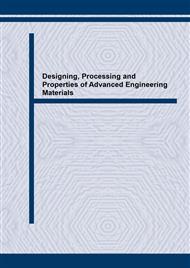p.77
p.81
p.85
p.89
p.93
p.97
p.101
p.105
p.109
Influence of Biaxial Surface Stress on Mechanical Indenting Deformations
Abstract:
A theoretical model has been proposed to assess quantitative residual stress from a stress-induced shift in an indentation curve, but the assumption in this model of equibiaxial surface stress has obstructed its application to real structures in complex stress states. Thus we investigated the influence of non-equibiaxial surface stress on contact deformation through instrumented indentations of a biaxially strained steel plate in order to extend the model to a general surface stress by considering a ratio of two principal stresses.
Info:
Periodical:
Pages:
93-96
Citation:
Online since:
March 2004
Authors:
Price:
Сopyright:
© 2004 Trans Tech Publications Ltd. All Rights Reserved
Share:
Citation:


